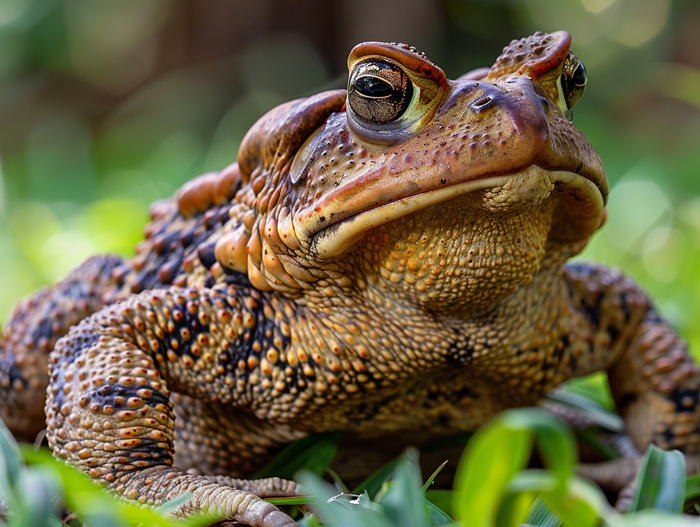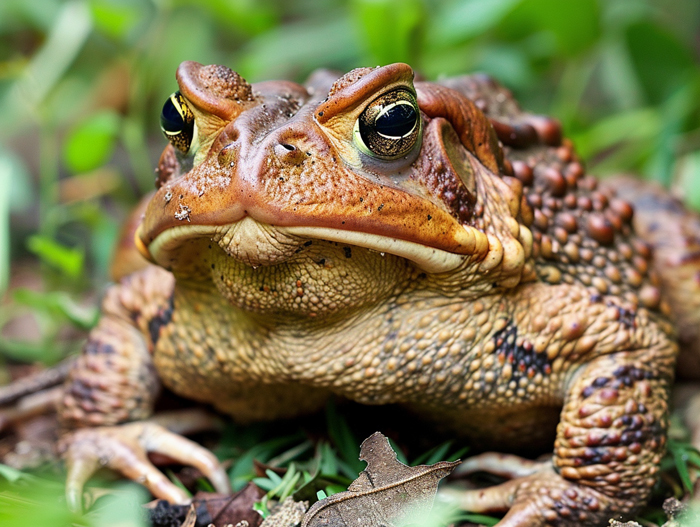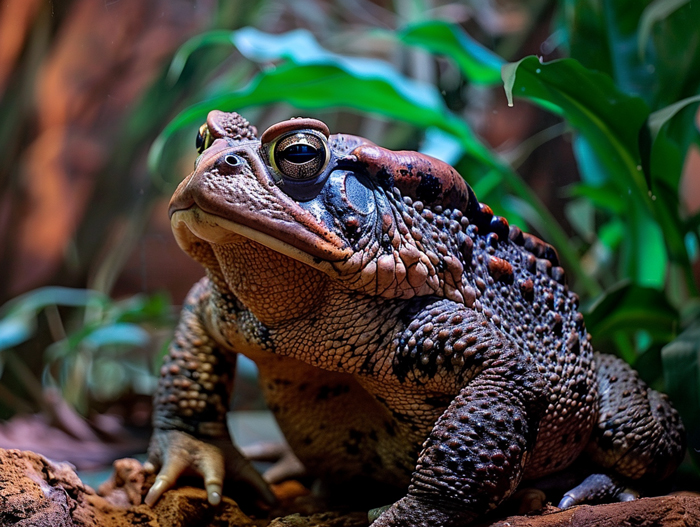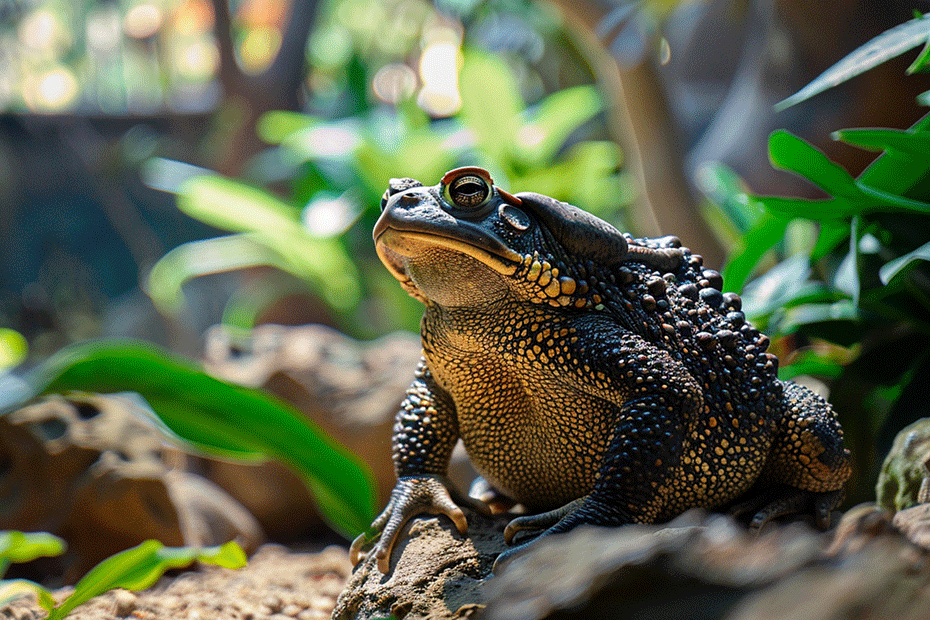Are you curious about where cane toads live? These amphibians are known for their adaptability to various environments. Cane toads can be found in a range of habitats, from tropical and subtropical regions to urban areas.
You’ll often spot these resilient creatures near water sources like ponds, lakes, and streams. Cane toads are also comfortable in gardens, parks, and even agricultural fields. Their ability to thrive in diverse settings has contributed to their widespread distribution.
Exploring the habitats of cane toads can provide valuable insights into their behavior and survival strategies. Let’s investigate deeper into the intriguing area of these amphibians and uncover the secrets of where they choose to call home.
Key Takeaways
- Cane toads are highly adaptable amphibians that can be found in tropical and subtropical regions, urban areas, gardens, parks, and agricultural fields.
- They are often located near water sources like ponds, lakes, and streams, which provide necessary moisture for their survival.
- Cane toads prefer terrestrial habitats in open landscapes and are adept at seeking shelter in burrows, rocks, or human-made structures.
- The temperature, food availability, water sources, shelter, and predators all play crucial roles in determining cane toad habitat selection.
- Their ability to thrive in diverse environments and their adaptability to human-modified landscapes showcase the versatility of cane toads.
- Exploring the habitats of cane toads can offer valuable insights into their behavior, survival strategies, and ecological preferences.
Overview of Cane Toads

Cane toads, native to South and Central America, have made their mark in various ecosystems worldwide. These adaptable amphibians have a unique habitat range that sets them apart:
- Tropical and Subtropical Regions: Cane toads thrive in warm climates, making tropical and subtropical regions ideal homes for them.
- Urban Areas: You’ll often find cane toads making themselves at home in urban settings, adapting to human-populated areas remarkably well.
- Proximity to Water Sources: Ponds, lakes, and other water bodies draw cane toads, providing necessary moisture for survival.
- Gardens, Parks, and Agricultural Fields: These areas offer ample food sources and shelter, attracting cane toads to these green spaces.
Cane toads’ ability to inhabit a variety of environments showcases their remarkable adaptability. Exploring their habitats sheds light on their fascinating behavior and survival strategies.
Natural Habitat of Cane Toads

Origin of Cane Toads
Cane toads (Rhinella marina), also known as giant neotropical toads, are native to South and Central America. Introduced to various territories as a form of pest control, these amphibians have proven to be highly adaptable, expanding their range beyond their original habitat.
Current Distribution of Cane Toads
Cane toads are now a common sight in tropical and subtropical regions worldwide. They can be found in urban areas, near water bodies such as ponds and lakes, as well as in gardens, parks, and agricultural fields. Their ability to thrive in diverse environments demonstrates their impressive resilience and survival skills.
| Statistic | Data |
|---|---|
| Number of Countries | Over 15 |
| Range | Australia, Africa, USA |
| Invasive Species Status | Considered Invasive |
Explore the intriguing habitats of cane toads to uncover more about their fascinating behavior and strategies for survival.
Preferred Environments

Terrestrial Habitats
- Cane toads prefer living in open landscapes such as grasslands, woodlands, and urban areas.
- They seek out shelter in burrows, under rocks, logs, or in human-made structures like buildings and sheds.
- Cane toads thrive in warm climates and are often found in regions with temperatures above 15°C.
- Their adaptability allows them to inhabit a variety of environments, from dry deserts to tropical rainforests.
- Water sources, such as ponds, dams, and streams, are essential for cane toads’ survival.
- They rely on these habitats for breeding and hydration.
- Cane toads are adept swimmers and are commonly spotted near water bodies.
- Moist environments near water are ideal for their reproduction and development.
Factors Influencing Cane Toad Habitat Selection
When considering cane toad habitats, several factors come into play in determining where these amphibians thrive. Understanding these key influences sheds light on why cane toads are found in specific environments.

Temperature Preferences
- Cane toads are most active in warm climates above 15°C.
- Temperature fluctuations dictate their movement patterns and choice of habitat.
Food Availability
- Abundant food sources, such as insects, influence the suitability of a habitat for cane toads.
- Open landscapes like grasslands attract cane toads due to the presence of prey.
Water Sources
- Crucial for survival, water bodies like ponds and streams serve as breeding grounds and hydration spots for cane toads.
- Proximity to moist environments is vital for their reproduction and development.
Shelter
- Cane toads seek shelter in burrows, under rocks, or human-made structures to protect themselves from harsh conditions.
- The availability of shelter plays a significant role in habitat selection.
Predators
- Predation pressure influences where cane toads choose to live.
- Avoiding areas with high predator populations is crucial for their survival.
- Urban areas with structures and water features attract cane toads, increasing their adaptability to human-modified landscapes.
- Human activity can shape the distribution and abundance of cane toads significantly.
Understanding these elements gives insight into the versatility of cane toads and their ability to thrive in various habitats.
Continue exploring the factors that influence cane toad habitat selection to gain a deeper understanding of their ecological preferences.
Conclusion
You’ve delved into the intricate world of cane toad habitat selection, uncovering the key factors that dictate where these amphibians reside. From temperature preferences to food availability, water sources, shelter, and predator presence, each element plays a crucial role in shaping their living environment. By understanding these nuances, you gain insight into the adaptability and resilience of cane toads in various landscapes. Their ability to thrive in warm climates, seek out abundant food sources, use water bodies for breeding, and navigate urban settings showcases their remarkable adaptability. As you grasp the complexity of cane toad habitat selection, you appreciate the intricate balance that allows these creatures to flourish in diverse ecosystems.

Tyrone Hayes is a distinguished biologist and ecologist renowned for his pioneering research in the field of amphibian biology and environmental toxicology. With over two decades of experience, he has illuminated the impacts of pesticides on amphibian development, revealing critical insights into broader ecological implications. Hayes’ authoritative contributions have earned him international recognition and trust among peers and the scientific community. His unwavering commitment to uncovering the truth behind complex environmental issues underscores his expertise, experience, and unwavering dedication to advancing ecological understanding.
